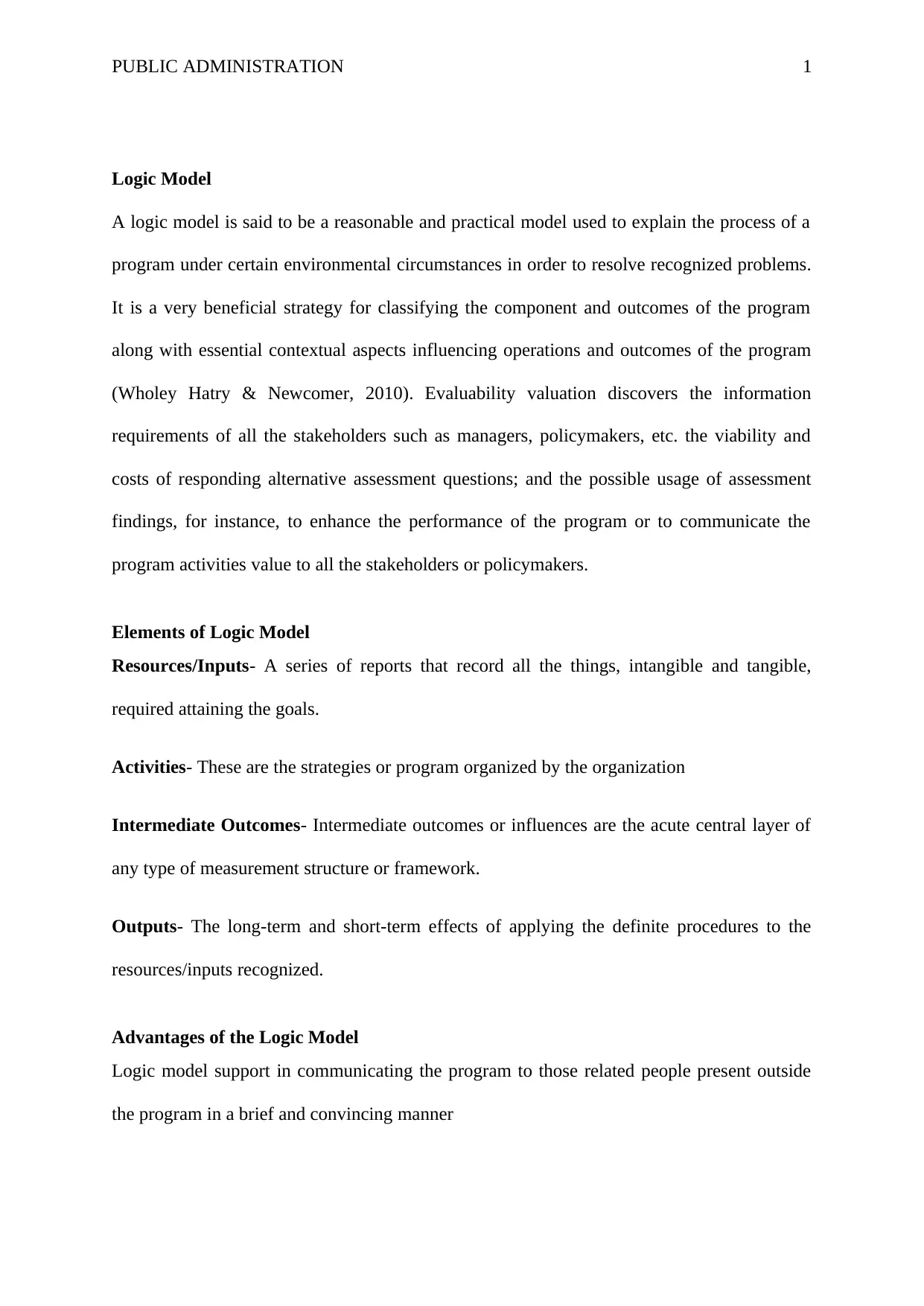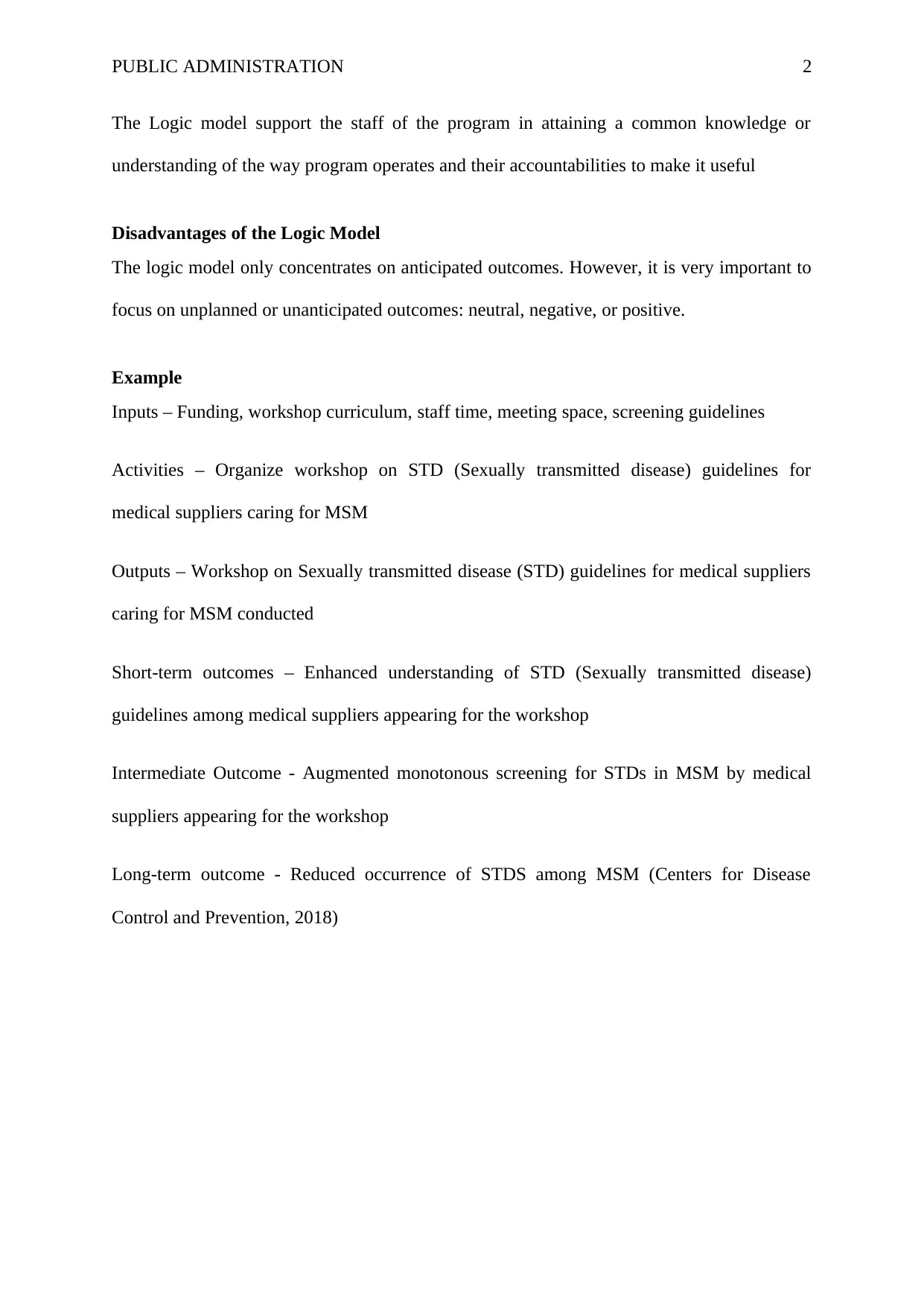Public Administration: Logic Model Report and Analysis - University
VerifiedAdded on 2021/09/17
|4
|469
|423
Report
AI Summary
This report provides an analysis of the Public Administration Logic Model, a tool used to explain program processes and evaluate outcomes. It explores the components of a logic model, including inputs, activities, outputs, and various types of outcomes (short-term, intermediate, and long-term). The report also discusses the advantages and disadvantages of using a logic model. An example is provided, focusing on a workshop regarding STD guidelines for medical suppliers caring for MSM (men who have sex with men), detailing how the logic model can be applied in this context. The report references the Centers for Disease Control and Prevention (CDC) and other relevant sources to support its findings. The report emphasizes the importance of logic models in program evaluation and their role in communicating program information to stakeholders. It also highlights potential limitations, such as the focus on anticipated outcomes and the need to consider unanticipated results.
1 out of 4





![[object Object]](/_next/static/media/star-bottom.7253800d.svg)